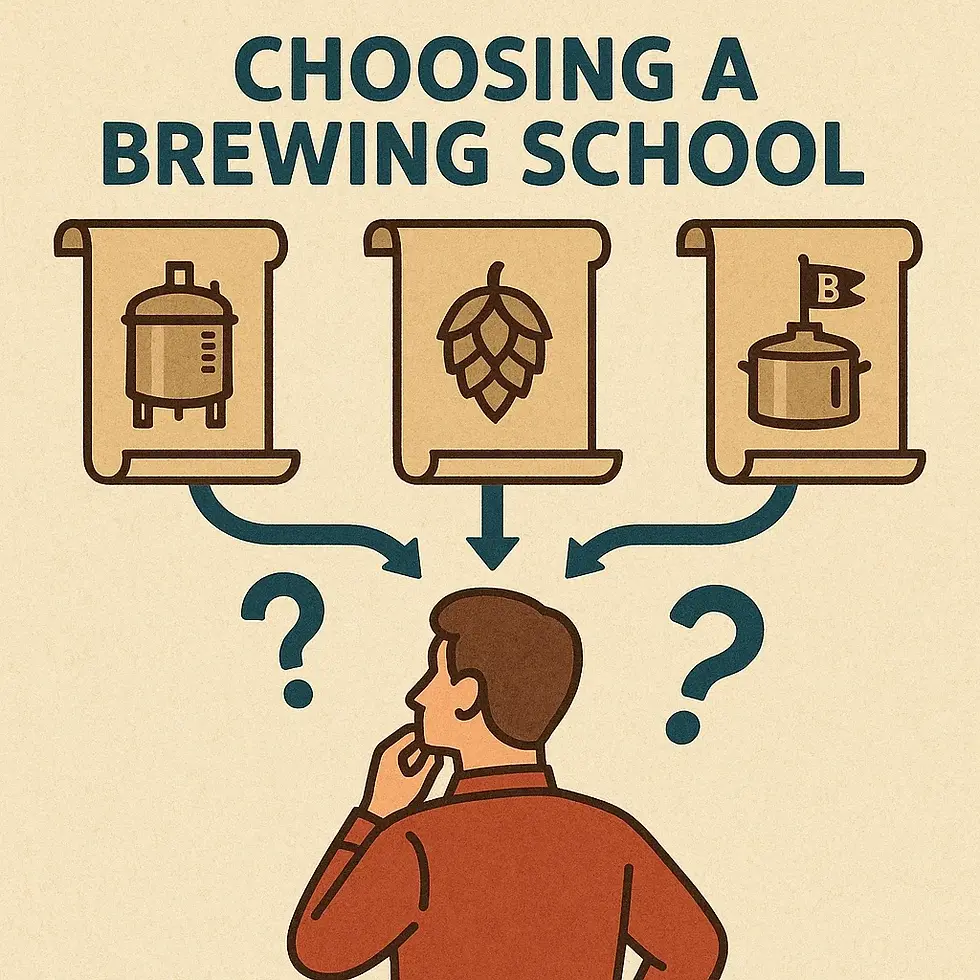IBU Decoded: The Science Behind Your Beer's Bitterness
- Umang Nair
- May 23
- 3 min read
Let's talk bitter truths, shall we? In any other context, "bitter" sounds like something you'd avoid, but in beer? It's liquid gold. And that, my friends, is the magic of IBUs – International Bitterness Units – the little number that explains the tasty bite in your beer.
As a brewer obsessed with the science of flavor, I can tell you these little numbers are like the secret code that unlocks your beer's personality. They're not just some brewing technicality; they're the difference between a beer that makes you say "wow" and one that makes you say "whoa!"

What's Actually Happening in Your Glass
IBUs measure isomerized alpha acids in your beer—essentially the scientific scorecard of how bitter your brew is. These compounds get extracted during the boiling process when we toss in those glorious hops. We'll talk about hops in another article. Think of the boil like a tea steeping session—drop in the hops, and the longer they soak in the heat, the stronger and bolder the bitterness gets.
Brewing in around India adds its own twist—especially when it comes to managing IBUs. With our distinct water chemistry and local ingredients, getting that bitterness just right takes some thoughtful adjustments. It’s part science, part art, and honestly, a whole lot of fun.
The Great IBU Illusion
Here's the mind-bending part—two beers with identical IBU measurements can taste dramatically different! Your perception of bitterness is like a complex cricket match where malt sweetness, residual sugars, and alcohol content are all playing different positions.
Take an Imperial Stout and an IPA, both clocking in at 70 IBUs. The stout might taste smooth and balanced while the IPA proudly displays its bitterness like a peacock during monsoon season. It's not about the numbers—it's about how they play with everything else.
The Bitterness Misunderstanding

Here's something I wish every new craft beer explorer knew: "bitter" in beer isn't like bitter in medicine. When we brewers talk about IBUs, we're not trying to punish your taste buds—we're creating balance! That IPA with 65 IBUs? It's not about making you wince; it's about providing the perfect counterpoint to the juicy malt sweetness hiding underneath. It's like how a dash of lime transforms your chaat—it's not about the sourness, it's about the balance. Apologies for the out-there example!
If you're new to craft beer and have been avoiding IPAs or stouts because the word "bitter" sounds scary, I'm officially giving you permission to forget everything you think you know. Start with a sessionable IPA or a milk stout where sweetness and bitterness dance are balanced. Your palate is more adventurous than you think—trust it on this journey of flavour discovery!
Finding Your Perfect Bitter Match
Not sure where your taste buds fall on the bitterness spectrum? Here's a quick field guide:
Light Lagers: 8-20 IBUs (Perfect for those sweltering afternoons when bitterness takes a backseat)
Wheat Beers/Fruit beers: 10–25 IBUs (Smooth, refreshing, and gently bitter—great with sunshine)
Session IPA's/Amber Ales: 20-40 IBUs (Just enough bite to complement those spicy local flavors)
IPAs: 40-70 IBUs (Now we're talking serious bitterness for serious craft enthusiasts)
Double IPAs: 60-100+ IBUs (Bitter? More like better!)
Remember, brewing is both precise science and wild art. IBUs are just one element in the magical transformation happening in your glass. So next time you're sipping one of our craft creations, give a little nod to those International Bitterness Units—the unsung heroes working behind the scenes to give your brew its perfect bitter balance.



Comments